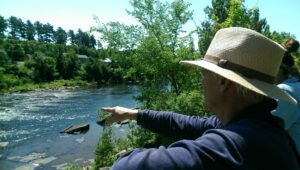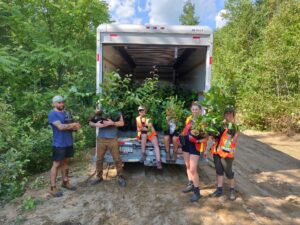 As the president of the Nashwaak Watershed Association, and as such, a participant in several meetings and consultations with the Sisson project proponents, I respectfully submit the following comments on behalf of that organization.
As the president of the Nashwaak Watershed Association, and as such, a participant in several meetings and consultations with the Sisson project proponents, I respectfully submit the following comments on behalf of that organization.
I would like to suggest that, had anything resembling the standards employed in the other study areas of this EIA been applied to the public engagement component, we might be having a very different discussion about what concerns the public have developed regarding this project.
To begin with, the proponent had no method for establishing a baseline for the public’s understanding of the project and project processes. They were unaware of the functional literacy rate within that population (and then unbelieving when informed that it was slightly north of 60%). They had no means of measuring the efficacy of their communication, no feedback method.
They refused to speak in public forums in any of the communities within the watershed, and ignored invitations to attend the dinner and discussion sessions which we held as part of our public engagement in the EIA.
They claimed to have sent out 700 letters, to some people, somewhere, but never stated who they were, what criteria was used to determine who would get the letters and no reference to what the letters said. As an aside I might point out that the NWAI produces a newsletter and sends it to more than 7000 homes all within the watershed, and a copy of each one is available on our website.
I suspect, it is common practice in any branch of science (social or otherwise) to provide a rationale for the method chosen before undertaking any work. That work is of little purpose if it does not employ metrics which can support a conclusion, and doubly meaningless, in the absence of any conclusion.
It is hard to find a purpose for the insouciant efforts of Northcliff (the proponent of record at that time) in what they claim was public engagement.
It would seem impossible to claim public support for the project without having actually spoken to that public in public.
For that reason, we suggest that whether you decide to support the mine or not, you certainly have no basis for claiming that the public was “engaged”. .
As further evidence of the distance between what is generally understood as “public engagement” and what the proponent did, we might compare their “open houses and BBQ” system with the panel review meeting held recently in the town of Stanley. At that meeting, individuals and members of concerned organizations and businesses were allowed to speak at some length, and to ask and have answered, their questions.
Other participants were allowed to hear both the statements and the questions and answers offered.
All of those in attendance, benefitted from hearing these exchanges, and those exchanges then spawned other ideas and questions in an additive way, utilizing the communities’ collective experience and intelligence that only an open forum can give. It was both effective in spreading the information and fair in allowing everyone with the interest to be heard by their community.
If this was what our own government thought was the required means of engagement, then one must conclude that the Northcliff group did not meet that expectation, and therefore did not fulfill the requirement for public engagement.
Finally and as a side note, we note that a study undertaken by a private engineering firm, on behalf of the provincial government (see Sisson Mine review finds company underestimated costs by millions) into the post closure water treatment costs that raised serious concerns about both very low cost estimates and the methodology to be employed (specifically a floating baffle curtain wall) was never made available to the public.
Quite simply put, without a full disclosure of the best available information on this project and it’s social, fiscal and environmental impacts, it is impossible to make an informed decision. It is demonstrably the case that the public was not consulted, and it would appear, quite deliberately so.
Until this is done the project must not proceed.
P. McLaughlin, President,
Nashwaak Watershed Association Inc.

